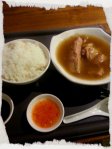 Marina Bay Sands stands tall in the humid heat haze of Singapore. It is one of the great temples of mammon, dripping in designer, extravagance and steel.
Marina Bay Sands stands tall in the humid heat haze of Singapore. It is one of the great temples of mammon, dripping in designer, extravagance and steel.  It is a retail theme park complete with venetian gondolas, an ice skating rink, rows of ATM’s, celebrity chef outlets, organic botox pushers and art installation window displays. You will find most shops have at least five shop assistants per counter. They look bored out of their air conditioned minds, clutching Louis Vuitton, and a middle distance stare. Price per piece so exorbitant, one sale would surely cover staff wages for a fortnight.
It is a retail theme park complete with venetian gondolas, an ice skating rink, rows of ATM’s, celebrity chef outlets, organic botox pushers and art installation window displays. You will find most shops have at least five shop assistants per counter. They look bored out of their air conditioned minds, clutching Louis Vuitton, and a middle distance stare. Price per piece so exorbitant, one sale would surely cover staff wages for a fortnight.
Marina Bay Sands is typical of most department stores. Designed to confuse and dazzle into parting with your hard earned. The only way in and out to my destination is via the inner boardwalks of opulence. I want to see the much talked about hawker food court. It’s not your regular Singaporean haunt. It’s way too shiny, up market to really be a traditional hawker centre. It’s neat, expensive and compared to the prices and decor of its older less glamorous brothers – the traditional hawker stall – out of reach to most locals.
Hawker food centres were the places where people would congregate, families share meals and business deals crunched. From what I can gather, Singaporian’s eat out…a lot! Belly’s full, they interact. Hawker stalls are equivalent in social importance as any community meeting place. It is their church, their local pub. One of the more colourful centres for sustenance is the Singaporean icon, Maxwell Road Food Centre. Here you will always find something to eat, the later the better, the stories unfold. It used to be dirty, loud and I loved it! But times are changing, a new generation is taking over and you can’t deny their fun. Now stalls are merited letters in accordance to the new standards imposed and although a friendly reminder is often needed to stop any unpleasantness, Singapore street hawkers have never poisoned this cast iron belly. It is the ones following HACCP or revised stricter controls that upset my equilibrium and stomach, too busy filling out forms and forgetting they left out the chicken. So, with this in mind, I needed to check out Singaporean food heritage’s new up market competition. Traditional costumes in a very modern setting gives this food centre a quaint Singapore feel, proud of its traditions but really this is big business with plastic tables and chairs. You won’t find guys in singlets and shorts serving you Tiger in iced mugs and dark soy carrot cake, oyster omelette or hot sweet goreng pisang


– but you will find the many stars of old Singapore hawker tradition. The only missing ingredient in this experience of Singaporean food is the heat, humidity and the smell, which is what you want to compliment the dish. All sensory seems to be visual and you easily get sucked into the circus. Steaming bamboo towers promising tiny bites of dim sum to dip into your chilli, an old guy looks out of place, a sad longing to be sitting reading the paper, chatting between orders to loyal customers, chillin’ between busy periods. But this is the modern world and as he stirs a pot of the heady medicinal pepperiness of bak kut teh looking out at the lunch marauders with their Prada and Gucci shopping bags, trying to look interested, he doesn’t fool me. This clientelle stopping for a quick bite, is the closest they would normally get to experience this cuisine. There are so many stalls, making one’s decision even harder but that is like any food court in the world. It’s a religious experience as you visit each one like the stations of the cross, or art exhibit – stopping to read, look at the image and move to the next. Malayan Nyonya (one of my passions) cookery get’s a look in also, and it should. Though being more entrenched in the traditions of the Malay peninsula, Singapore has a huge Malay core – the result of Chinese men marrying Malay locals and pining for their mother’s cooking. There’s the sensational Chicken Rice that is different everywhere you go (it’s the condiments and soup that make all the difference), the wonderful Nasi Lemak and it’s pandan subtlety, coconut rice, ikan bilis and crunchy chicken wing. You’ll also find some of the famed Makansutra legends here – humble hawker beginnings now franchised all over the world.


I needed a lift (and I wanted the old guy to not be so bored) so went for the Bak Kut Teh – pork bone soup (or tea) and rice and at $9.50 was expensive (the same dish in Changi Village, half the price and twice as tasty – though this was excellent it just lacked atmosphere) I read a piece in the Strait Times that had a quote from the Minister for the Environment and Water Resources Vivian Balakrishnan. He stated that “there is a real possibility that Singapore may one day lose its rich hawker heritage if the next generation of Singaporean hawkers do not replace our current veterans”. He went on to say they were having trouble finding people who would continue the hawker food traditions. I understand the next generation want the shiny brights of chain restaurants as well, but an evolution has occurred, though far less romantic than watching the old bumboats from the riverbank or the charcoal pits which housed The Satay Club, just south of the Padang, a bustling, hot, noisy, cheap night of hawker memories, I’m glad it exists. “It’s easy to build (new hawker) centres,” he said. “But the key challenge is to find enough Singaporeans who’d be willing to enter this profession, which is a difficult, challenging one.” Dr Balakrishnan added that the other key challenge was to persuade veteran hawkers to pass on their trade knowledge and know-how to, by teaching interested younger hawkers. Suggestions from participants included according star hawkers the same accolades and status given to top chefs – as they do in Japan, lauded and admired. This might be all well and good, but ultimately real hawker traditions will ultimately manifest themselves out of the city’s clutches and return to heartland that value a shared, inexpensive pleasure of local flavours and homestyle cooking.
word and images Abbie Foxton


 today’s inspiration No. 61 Rust And Blue 1953
today’s inspiration No. 61 Rust And Blue 1953



You must be logged in to post a comment.